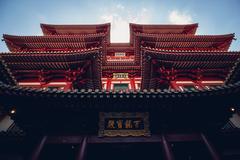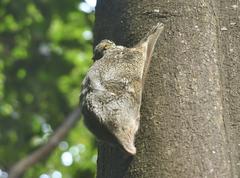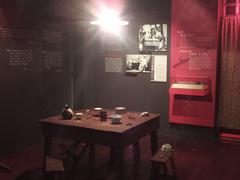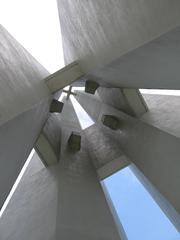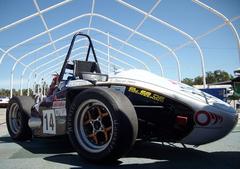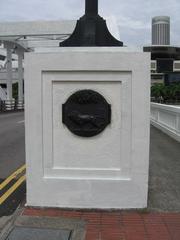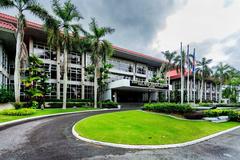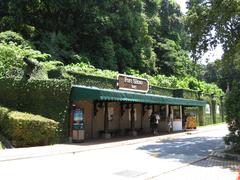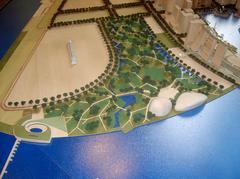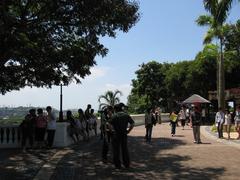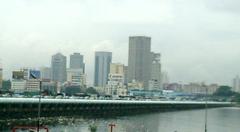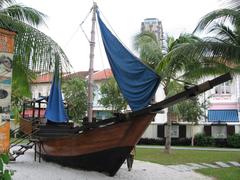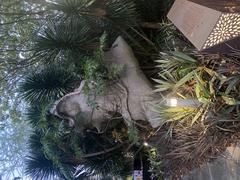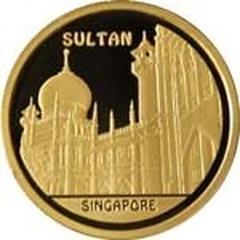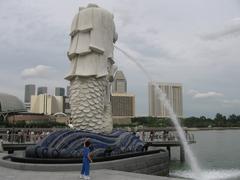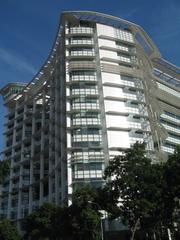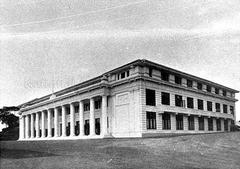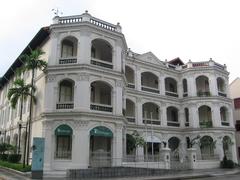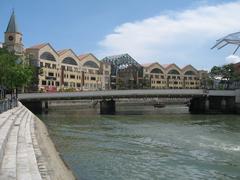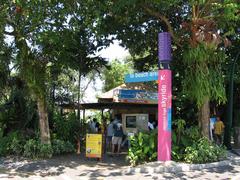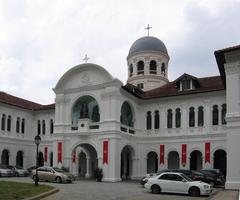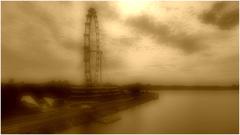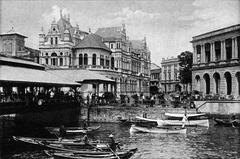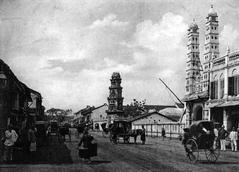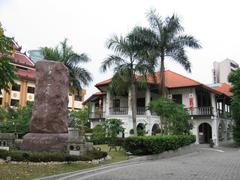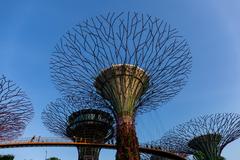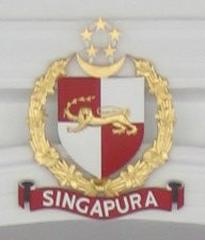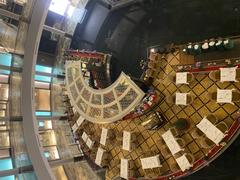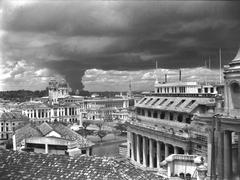Singapore Management University Visiting Guide: Tickets, Hours, and Tips
Date: 14/06/2025
Introduction: History and Significance
Singapore Management University (SMU) is a leading urban university located in the heart of Singapore’s Bras Basah district. Established as a top business and management institution in Southeast Asia, SMU’s campus is renowned for its modern architecture, sustainability initiatives, and integration with the city’s historical and cultural fabric. Its open design, green courtyards, and innovative buildings provide an urban educational experience unlike any other in Singapore. Whether you are an architecture enthusiast, prospective student, or cultural explorer, SMU offers a rich and immersive environment that reflects the city’s values of innovation, environmental stewardship, and community engagement. For deeper insights and updates, refer to Cullinan Studio project page, KNTA Architects, and the SMU Centre for Global Education and Opportunities.
Table of Contents
- Introduction
- Campus Location and Urban Integration
- Visiting Hours and Campus Tours
- Masterplanning Philosophy and Design Principles
- Architectural Features and Notable Buildings
- Sustainability and Green Design
- User Experience and Accessibility
- Nearby Attractions and Cultural Highlights
- Practical Visitor Tips
- Frequently Asked Questions (FAQ)
- Awards and Recognition
- Integration with the City and Community
- Conclusion
- References and External Links
Campus Location and Urban Integration
SMU’s campus is uniquely situated in Singapore’s Bras Basah arts and cultural district. Unlike secluded traditional campuses, SMU is woven directly into the city’s fabric, bordered by major landmarks such as the National Museum of Singapore, the Singapore Art Museum, and the Cathedral of the Good Shepherd. This intentional urban integration creates a vibrant, accessible hub for students, locals, and visitors (Cullinan Studio). The campus is served by three MRT stations—Bras Basah, Dhoby Ghaut, and Bencoolen—ensuring seamless connectivity and easy access (Cullinan Studio).
Pedestrian walkways and open courtyards invite interaction and foster a sense of permeability, making SMU’s campus a living part of the city rather than a closed academic enclave.
Visiting Hours and Campus Tours
- Opening Hours: SMU’s campus grounds are open daily from 8:00 AM to 10:00 PM. Access to specific buildings may be limited during academic hours or special events.
- Admission: Entry to public areas and courtyards is free.
- Guided Tours: SMU offers guided tours by appointment. These tours provide insights into the university’s architecture, sustainability features, and urban integration. To book, visit the SMU GEO website or call +65 6828 0100.
Masterplanning Philosophy and Design Principles
The masterplan for SMU was developed by Cullinan Studio (UK) and KNTA Architects (Singapore) after an international competition, with a focus on creating a world-class institution seamlessly connected to the city (KNTA Architects). Key principles include:
- Permeability: Open walkways and visual corridors connect the campus to the city and surrounding parks (Cullinan Studio).
- Flexibility: Horizontally layered buildings can adapt to changing academic needs.
- Integration with Nature: Preservation of mature rain trees, extensive vertical planting, and landscaped courtyards create a green oasis within the urban core.
Architectural Features and Notable Buildings
Li Ka Shing Library
The library is a central hub, designed to harness natural light and offer views of tranquil courtyards, creating a welcoming space for study and reflection (Cullinan Studio).
School Buildings
SMU’s school buildings are characterized by stepped facades and open, transparent layouts that foster collaboration. Informal gathering spaces and shaded walkways encourage interaction and comfort (Cullinan Studio).
Administration Building
This building anchors the campus and features public areas integrated with lush landscaping, embodying the university’s commitment to openness and accessibility (KNTA Architects).
Sustainability and Green Design
SMU is celebrated for its green initiatives and environmentally conscious campus. Major features include:
- Three Tiers of Landscaping: Concourse gardens, ground-level green spaces, and rooftop gardens improve air quality and provide shaded outdoor areas (Cullinan Studio).
- Vertical Planting: Green facades help regulate building temperatures and reduce energy usage.
- Solar Power: SMU operates Singapore’s largest solar power plant within a city centre campus (SMU Newsroom).
- Eco-Friendly Construction: New buildings utilize Mass Engineered Timber (MET), modular steel, and sustainable materials, earning the BCA Green Mark Platinum award.
User Experience and Accessibility
- Shaded Walkways and Courtyards: Provide comfort and respite from the tropical climate.
- Wheelchair Accessibility: Ramps, elevators, and accessible restrooms are available throughout the campus.
- Underground Concourse: Enables sheltered movement between buildings and links to MRT stations.
Nearby Attractions and Cultural Highlights
SMU’s central location makes it a perfect starting point for exploring Singapore’s cultural and historical landmarks:
- National Museum of Singapore: Showcasing the nation’s history and heritage.
- Singapore Art Museum: Home to contemporary art exhibitions.
- Cathedral of the Good Shepherd: Singapore’s oldest Roman Catholic church.
- Fort Canning Park: A historic hilltop park with green spaces and archaeological sites.
- Bras Basah Historical Sites: Featuring public art and architectural heritage.
All attractions are within walking distance, allowing for a comprehensive day of exploration.
Practical Visitor Tips
- Arriving by MRT: Use Bras Basah, Dhoby Ghaut, or Bencoolen stations for easy access.
- Campus Navigation: Start at the Administration Building, explore open courtyards, and use the underground concourse to move between campus zones.
- Dress Code: Light, breathable clothing is recommended due to the tropical climate. Bring an umbrella for rain or sun.
- Dining: Numerous campus cafes and nearby eateries offer local and international cuisine. Some hawker stalls may only accept cash.
- Etiquette: Singapore values cleanliness and order. Observe local customs like queueing and addressing elders respectfully.
Frequently Asked Questions (FAQ)
Q: What are SMU’s visiting hours?
A: The campus is open daily from 8:00 AM to 10:00 PM; some facilities may have restricted access.
Q: Is there an admission fee?
A: No, entry to SMU’s campus grounds is free.
Q: Are guided tours available?
A: Yes, by appointment through the SMU GEO website.
Q: Is the campus wheelchair accessible?
A: Yes, there are ramps, elevators, and accessible restrooms.
Q: Can I take photos on campus?
A: Yes, photography is allowed in public areas. Please respect privacy and do not disrupt classes.
Q: Are there ticketed exhibitions or events?
A: Some events require tickets. Check the SMU Newsroom for updates.
Awards and Recognition
SMU’s campus masterplan has received the Landscape Industry Association of Singapore Gold Award, recognizing its outstanding integration of architecture, landscape, and urban context (Cullinan Studio).
Integration with the City and Community
SMU serves as a dynamic civic hub, hosting public events, lectures, and exhibitions that promote interaction between the university and the wider community. Its open campus encourages engagement and collaboration with nearby museums, galleries, and cultural institutions.
Conclusion
Singapore Management University stands as a model for urban campus design, blending education, sustainability, and cultural heritage. Visitors can enjoy tranquil green spaces, innovative architecture, and easy access to Singapore’s most iconic cultural landmarks. With free entry, excellent public transport links, and a wealth of nearby attractions, SMU is an essential stop for anyone exploring the city’s educational and cultural landscape.
Plan your visit today by downloading the SMU Self-Guided Map, booking a guided tour, and exploring the vibrant Bras Basah district.
References and External Links
- Exploring Singapore Management University: Visiting Hours, Campus Highlights, and Nearby Attractions, 2024, Cullinan Studio (https://www.cullinanstudio.com/project-smu)
- Singapore Management University (SMU) Visiting Guide: Hours, Tickets & Nearby Historical Sites, 2024, Singapore Management University (https://geo.smu.edu.sg/)
- Singapore Management University Campus Masterplan by KNTA Architects, 2024 (https://www.knta-architects.com/smu)
- SMU Newsroom: Sustainable Building and Solar Farm, 2022 (https://news.smu.edu.sg/news/2022/10/28/smu-adds-another-sustainable-building-its-city-campus)
- SMU Self-Guided Map PDF, 2024 (https://admissions.smu.edu.sg/sites/admissions.smu.edu.sg/files/SMU_SelfGuideMap_Final.pdf)
- Singapore Tourism Board Official Website, 2024 (https://www.visitsingapore.com/)



